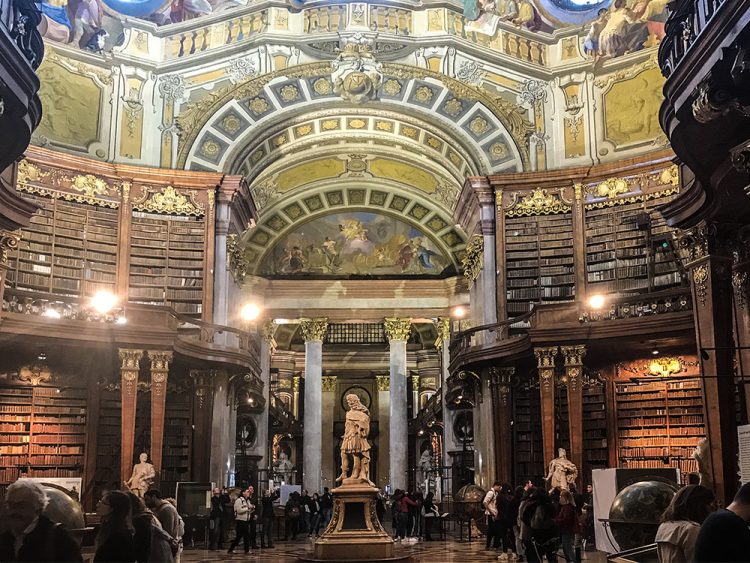It’s easy to see why the Austrian National Library in Vienna is regarded as one of the world’s most beautiful libraries.Inside the central State Hall, frescoed ceilings soar above walnut bookcases, and marble columns frame the room. Home to more than 12.5 million books and artefacts, the Library’s history stretches back over 650 years. Its story began in 1368, when Duke Albrecht III of Austria commissioned Johannes von Troppau, canon of Brno, to create an opulent gospel book. Complete with gold letters and illuminated pages, the work is known as the library’s foundation text.
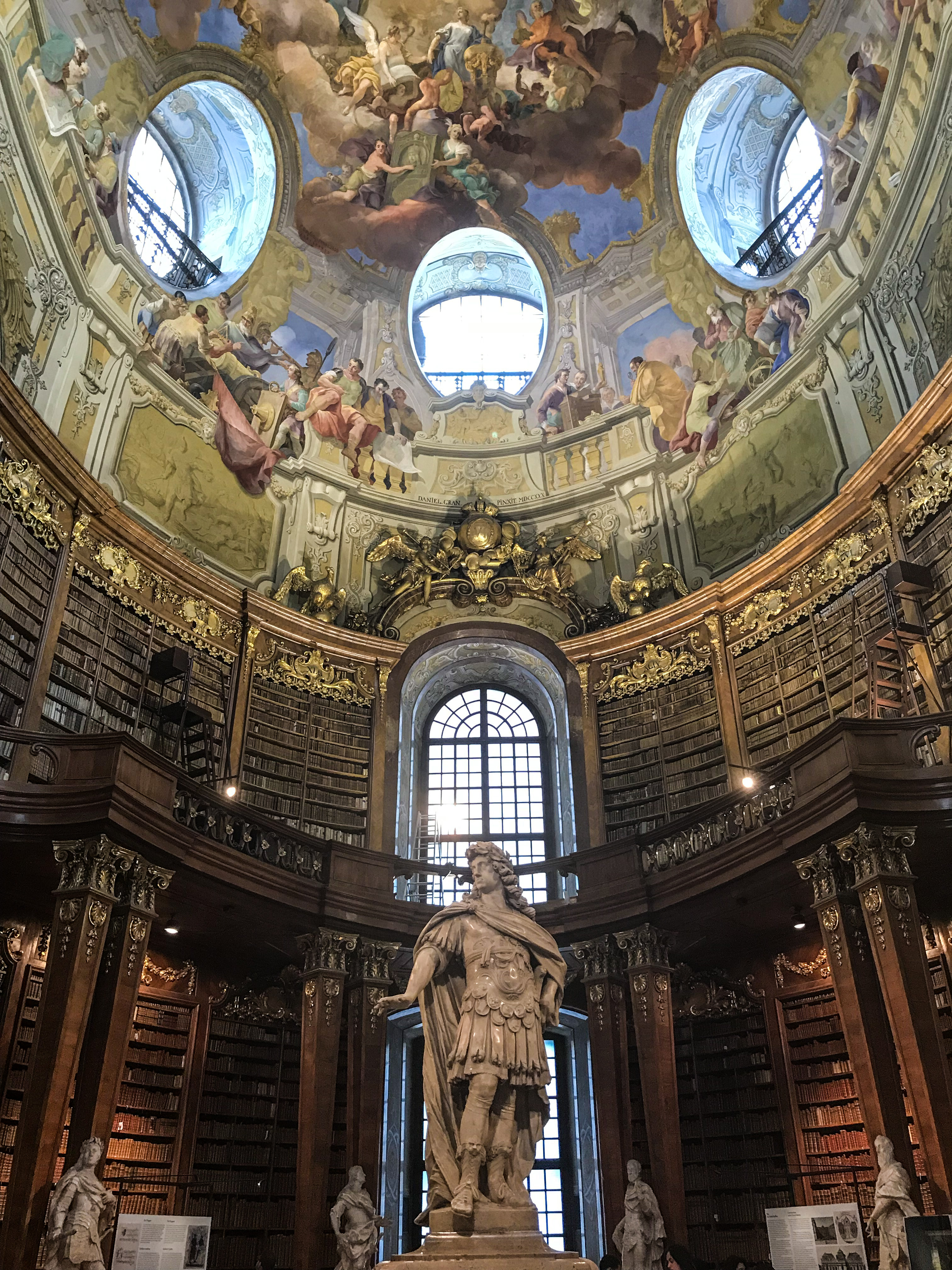
From its origins as a court library within monasteries and palaces, the institution was transformed in 1722, when Charles VI, Holy Roman Emperor, commissioned the construction of the present-day library. Designed by Johann Bernhard Fischer von Erlach, this architectural masterpiece remains the largest Baroque library in Europe. In 1920, the institution became Austria’s National Library, and its current collections encompass manuscripts, maps, papyrus and prints. Here are some of the highlights to discover.

Book of Antidotes
Known as the Kitab al-diryaq, this medical work is one of the earliest Islamic illustrated manuscripts. Created in Mosul during the 13th century, the text contains instructions on how to make theriac, an ancient remedy for snake venom, poisons and other ailments. It is filled with lavish illustrations, including the above scene, which depicts the invention of the antidote. Here, the classical physician Andromachus the Elder (shown on horseback), uses laurel fruits to treat a boy with a snake bite.
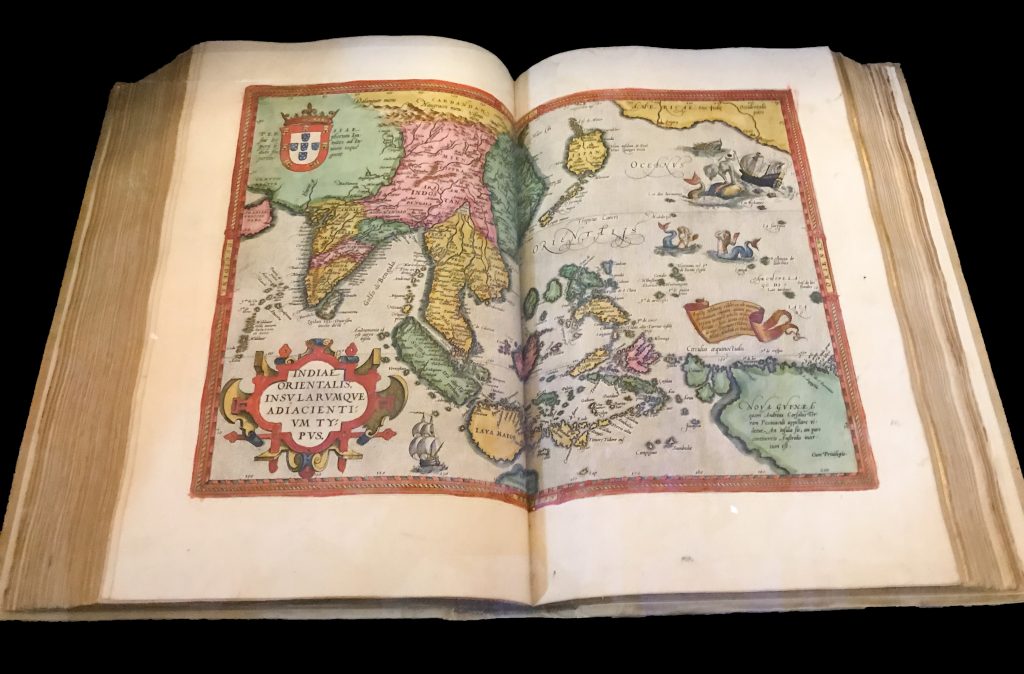
Theatrum Orbis Terrarum, Abraham Ortelius
This map of East Asia comes from the Theatrum Orbis Terrarum (Theatre of the World), an atlas produced by Flemish mapmaker Abraham Ortelius. Considered to be the first modern atlas, Ortelius’s 16th century work contains maps from leading cartographers, such as Gerard Mercator, Olaus Magnus Gothus and Antonius Ienkinsonus. The work was produced during the Age of Exploration, a period that saw European navigators travel around the world in search of new lands and trading opportunities. It brings together the latest geographical discoveries – from details of the Indian archipelago to the coastlines of South East Asia – and illustrations of fantastical sea creatures.
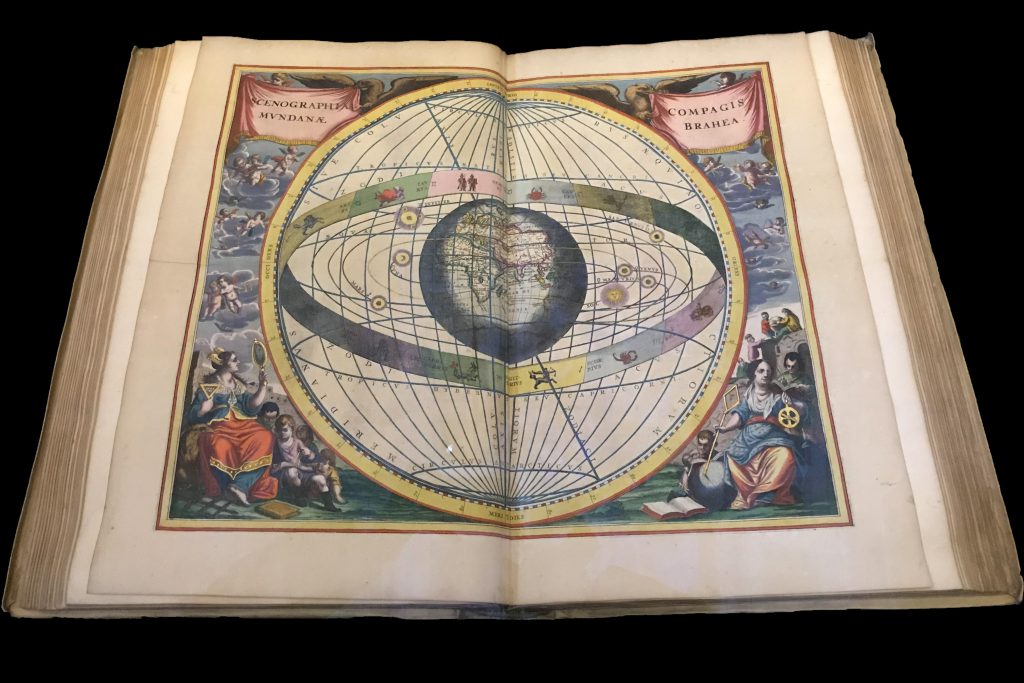
Harmonia Macrocosmica, Andreas Cellarius
A masterpiece of celestial cartography, this 17th century atlas was produced by the cosmographer and mathematician, Andreas Cellarius. It is filled with elaborate maps, which depict the theories of astronomers including Ptolemy, Copernicus and Tycho Brahe. This illustration is a representation of Brahe’s theory of the planets. Brahe believed that the sun orbited the earth, and that the remaining planets revolved around the sun. His theory rejected Ptolemy’s established earth-centred model of the universe.
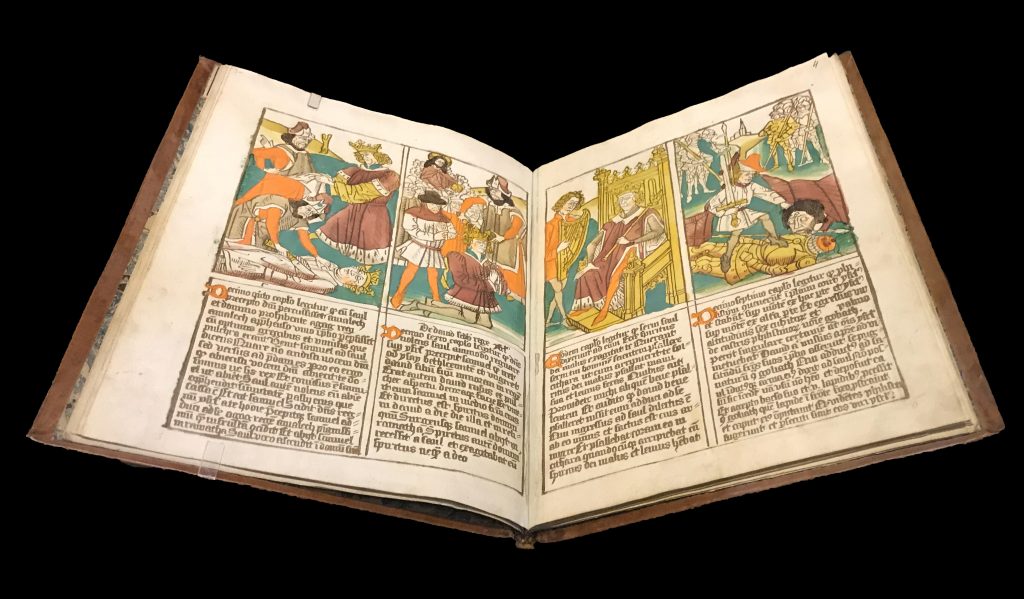
Liber regum or Historia Davidis
Made in the region of the lower Rhine, this text tells the story of the biblical David. Born in Bethlehem, David started life as a shepherd boy, and went on to become the king of Israel. He was renowned for his bravery: he killed the giant Goliath in battle, defeated Philistine forces, and united the regions in Canaan under his rule. This work dates from around 1470 and is an example of a ‘block book.’ Popular in the 15th century, block books were short works that incorporated images and text. To make this book, images and text were carved onto wooden blocks, inked and transferred to paper by rubbing.

Safra’s letter
Charged with anguish and reproach, this private letter was written by Safra, an affluent Cairo citizen, to her unfaithful husband. Here, she upbraids him for his two-year affair with another woman, and his nights in the taverns. More than 900 years after her letter was written, Safra’s heartache and anger is still keenly felt.
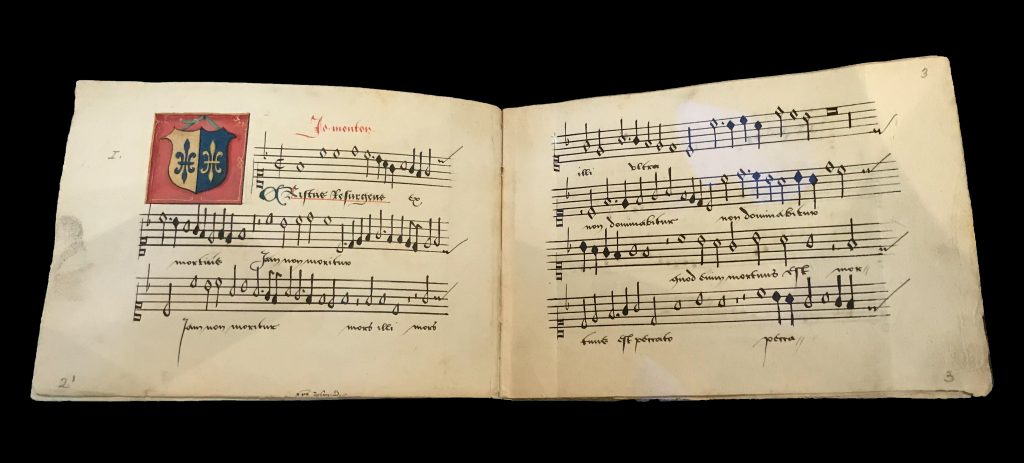
Fugger Partbooks
One of Germany’s wealthiest mercantile families, the Fuggers of Augsburg transformed the cultural life of their city. They commissioned Renaissance buildings and artworks, donated organs to churches, and subsidised musicians’ education. Two members of the family, father and son Raimund Fugger the Elder and Raimund Fugger the Younger, were keen musicians, and amassed a vast music library. This 16th century text is one of many partbooks from their library. It forms part of a set of choral books, which each contain a different voice part.
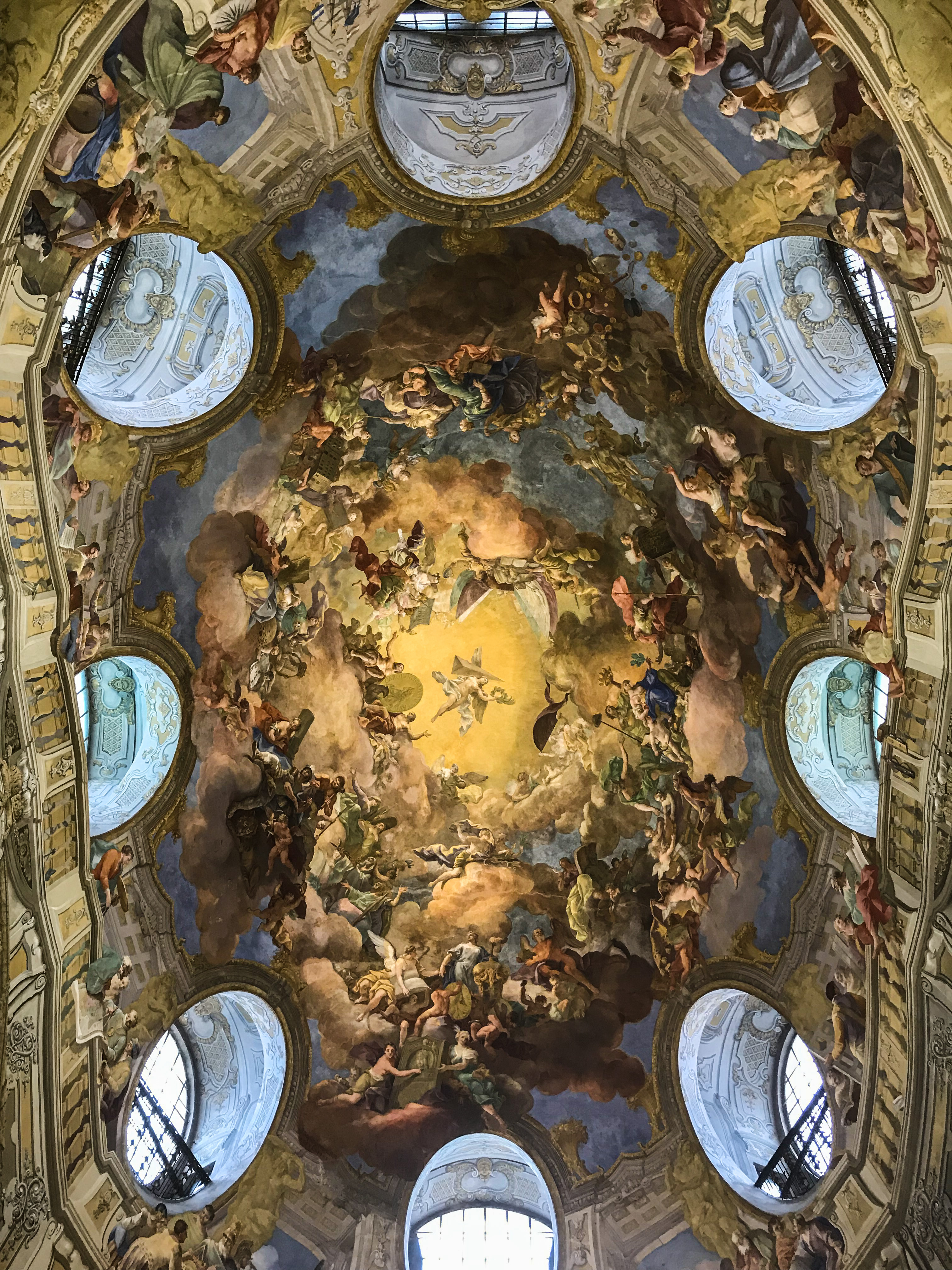
The Austrian National Library is located on Josefsplatz, Vienna. Visitors to the Library can explore the State Hall, Literature Museum, Globe Museum, Papyrus Museum, Esperanto Museum and the House of Austrian History. For more information about the Library, click here.
Discover more beautiful libraries
If you’re in search of spectacular libraries, check out my posts on the following:

